On The Road: NAMM 2020
NAMM is a tradition for many people I know. Walking around, it’s not uncommon to hear people talk about how many years they’ve been attending NAMM or the one year they missed the show. I took note that David (Cycling ‘74 founder and CEO) was attending his 35th NAMM, having only missed one in 1994. When I asked him about it, the answer was that he was busy working at IRCAM (I think we’ll give him a pass on that one :-) ).
But for many like myself, it’s either not a tradition yet or it’s just on the cusp, or like some of my colleagues who relentlessly manned the booths at NAMM while introducing Max in the 2000s may still be recovering from the PTSD, but not me.
With the age of the internet, why do people even go to NAMM?! It’s not like you can’t order your allotment of 40,000 new Korg Wavestate synths for your big box retail store with just a few emails to Korg these days, right?
Actually, there’s something greater in play for me, and it’s something the internet suffers greatly from these days — those things that come from the face-to-face real-space human connection. I think that attending NAMM is really good for the following;
Face-to-Face connection (relationships are formed over years of lunch meetings at NAMM)
Spotting new and old trends in synthesis
Seeing new offerings
Finding out about new technologies
Quick informative meetings with Max users from within the EMI industry
So here I am, and here's where I went and what I saw.
NAMM always starts with a line to collect your badge. I find quite it amusing, given that I always park in the Disney lot across from the convention center when I get there. The environs always remind me that I'm about to go on a different kind of ride than Space Mountain or Country Bear Jamboree.
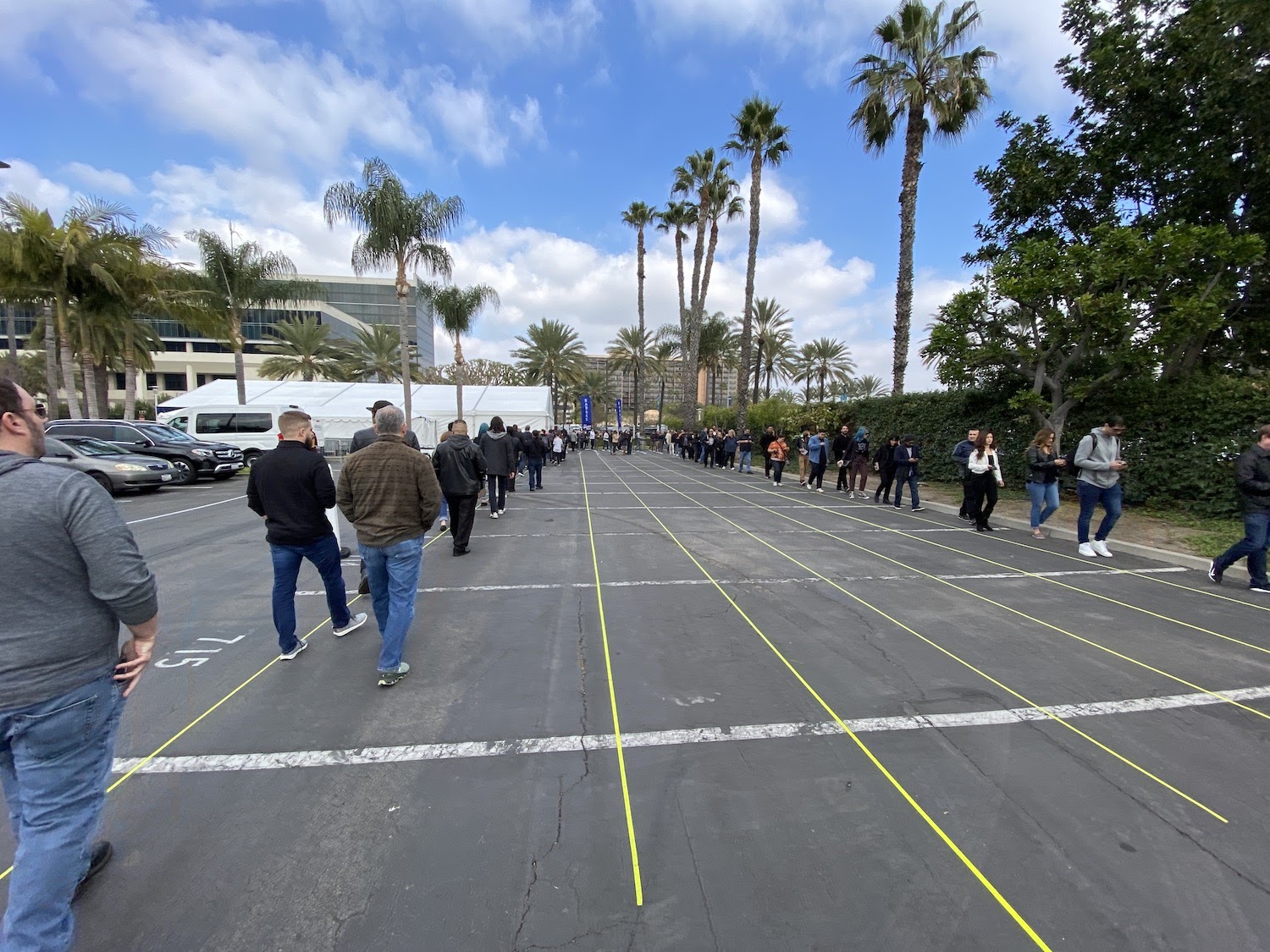
I have been going to NAMM long enough though to have seen a few improvements. You used to have to pick up your badge in the Marriott hotel's foyer (pure chaos). Back in the day, it was a small tent. These days, it's now a reasonably sized tent where you basically serve yourself at a kiosk and a person hands over your printed badge (5 minutes, tops). The line was moving fast!

I’ve always been amazed at the entrance to the convention center. It’s huge and lavish—stylish even. The fountain has LEDs that turn different colors at night and there is plenty of seating to sit around and admire it all. But otherwise, that’s pretty much it for lavish. The rest of the building is all about businesses housed in a few gigantic rooms.
So I got through security and the walk-in seamlessly, and my meetings were later in the day. It was my chance to look around. I walk through the first door into the main hall and its KORG, front and center. Their booth is always huge but this year they have some pretty significant offerings, including full-size MS-20s in multiple colors, an Opsix (aka KORGs take on the DX7 with extra herbs) and - last but not least - the ARP2600 reissue.
The 2600 is stunning. From that I could see, the build quality has not cut any corners and the sound IS exactly what you’d expect - breathtaking. I believe they are rather limited in terms of release numbers, but no one (including my friend working for KORG) could give me numbers. I spoke with Richard Devine, who told me this has been four years in the making, and that KORG reached out to him as an original ARP owner to help with R&D. Richard was actually doing some live demos with it, but I, unfortunately, had meetings at that time so I was unable to see him and the ARP2600 in full action.

The new Korg Wavestate wavetable vector synth was something I wasn’t initially interested in, but my tune changed rather quickly once I had a play. Since wavetable synthesis is one of Max’s strong points (keep your eye on future newsletters shortly… ), I am rarely that interested in shelling out the bucks for yet another wave synth that can’t be further developed or modified. This might be an exception...

Speaking of wavetable synths, Nord dropped a new revised Wave 2 synthesizer. I have to confess I’ve mostly given up on Nord developing synthesizers in the arena of sound that interests me. And I get it - they do very very well from selling their Stage Pianos to big pop artists. But one can hold out hope, and the Nord Wave 2 gives me some glimmer of hope for a Nord Drum 4 or - even better - a Nord Modular G3 (I’m not going to hold my breath, but hope springs eternal).
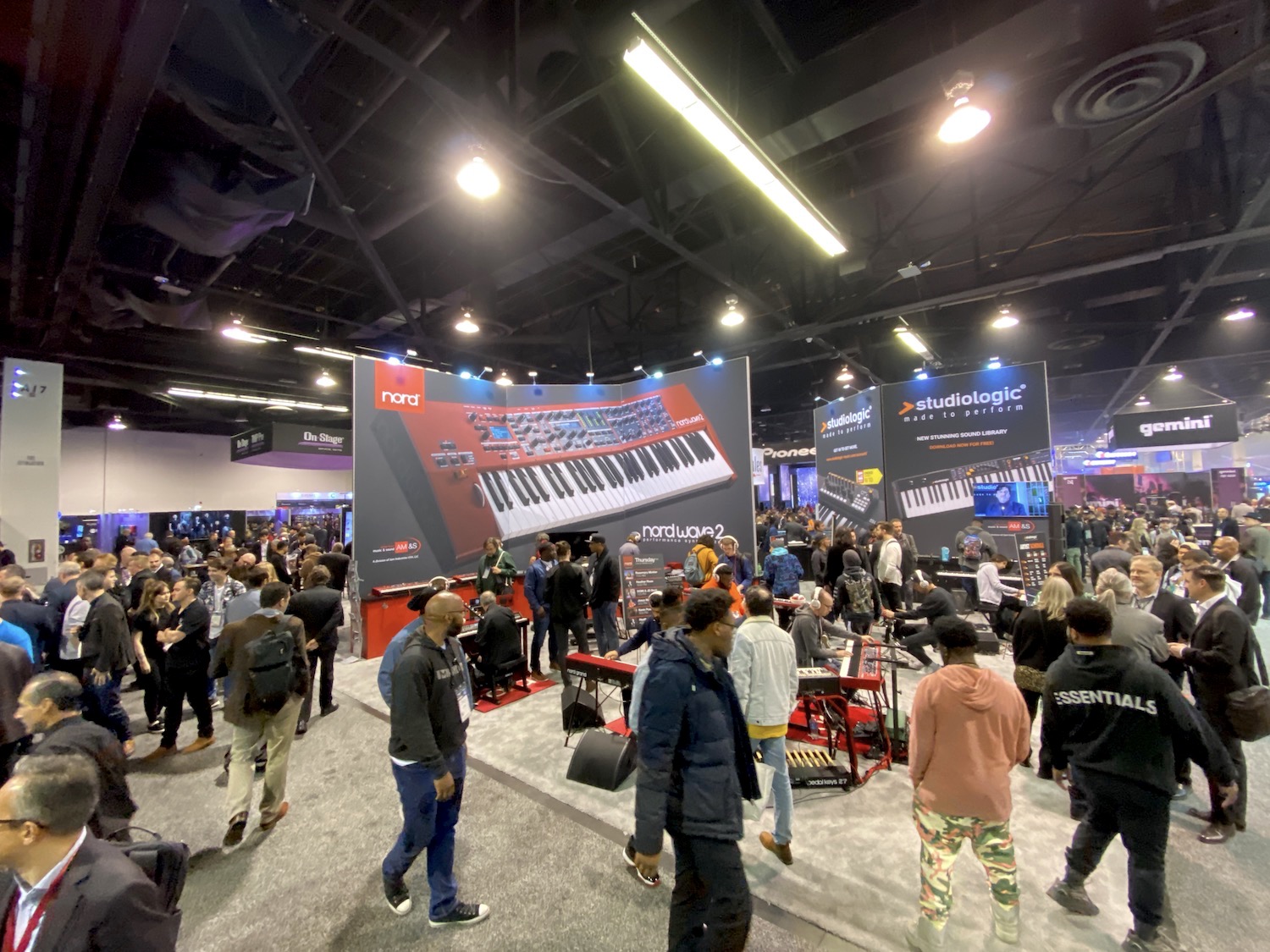
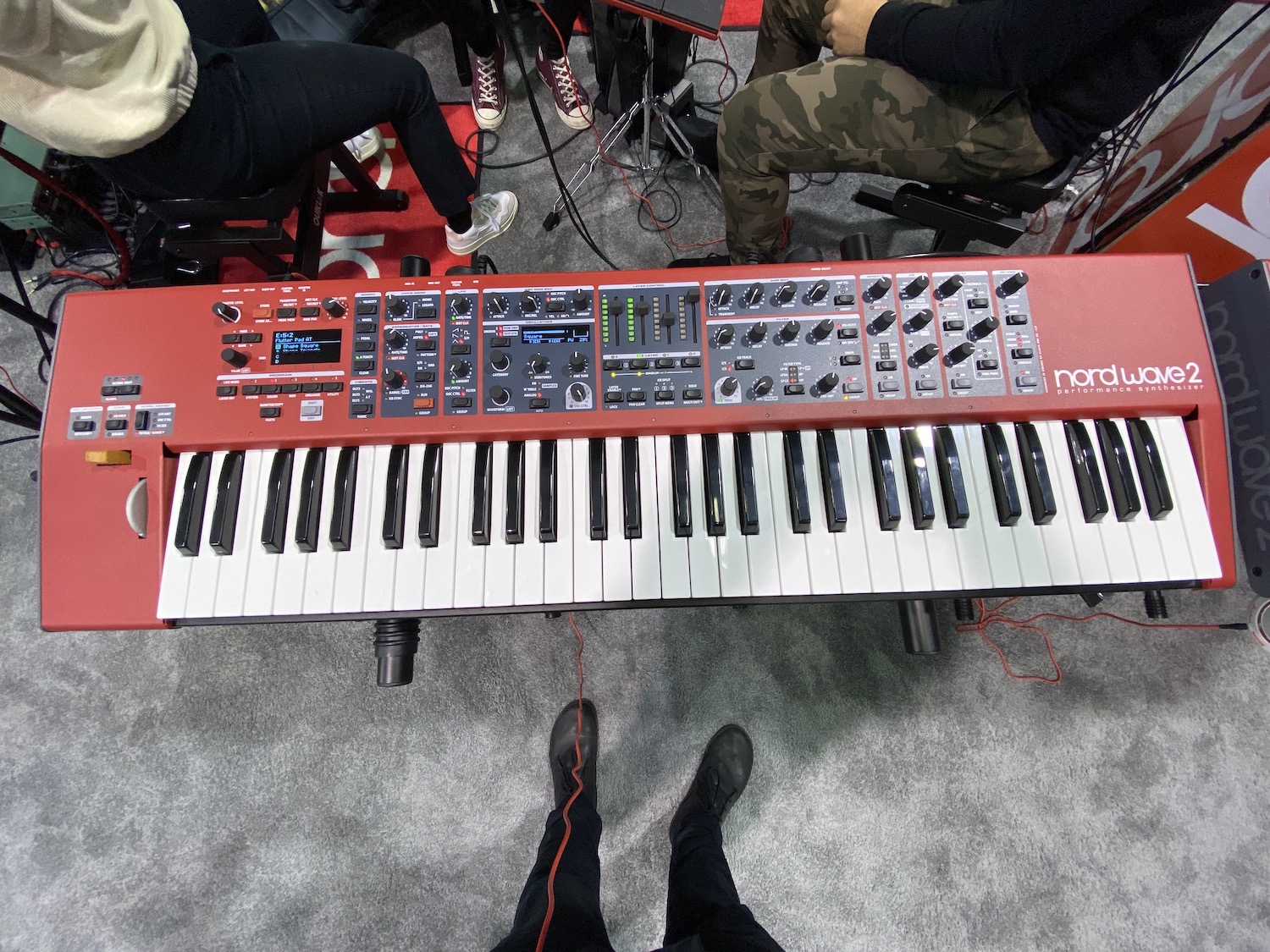

One of my favorite things is that NAMM has some truly quirky vendors. This vendor, a Chinese component manufacturer, has been one that I religiously drop by to see how much further they can push the LED encoder. This year, they have some truly impressive developments, these encoders are so good that they make me want to develop a piece of hardware just so I can throw a bunch of these wild components into it. I also get a chuckle out of the peculiar looks they no doubt get carrying these through airport security.

Another area I always like to take a look at as a reference for trends and developments lies with the independent DSP developers. I can assure you that Kontakt and subsequent samplers are not going away anytime soon, so there's no shortage there. But a point of interest for me is UI development, especially as we’re getting larger monitors with more DPI. This year there seemed to be a slant toward adding space, not piling it in, while still making every parameter accessible from a single page.

It was really great to see Tascam stepping into the DSP arena with a whole new range of audio interfaces. Tascam has been around for eons and almost anyone who has recorded music in the past 30+ years has some story about using something of theirs. With the popularity of cassettes back into the limelight, they’ve released a new all-in-one 12 track mixer/recorder and a slew of new audio interfaces. I'm particularly interested in the mixer - there’s something about being able to quickly hit record and mix, but not have to commit, knowing that all those tracks are being recorded as stems that you can work on later.

It’s easy to monitor ‘how big’ a NAMM year is going to be by how soon they station people at the escalators to let groups of people up and down, The lines formed pretty early this year, up & down.

It was great to drop by to see our friends at MOD Devices. They have a new miniature version of the MOD Duo that they’ll be launching soon called Dwarf. Keep your eye out for their Kickstarter and more details to follow.

I had a chance to see my old friend Simone Fabrri from Frap Tools. Not everyone knows this, but Simone started out as a Max user many years ago and was a developer as a part of K-Devices in the early days. Simone assures me that almost every hardware module he’s ever designed and built starts with some form of a prototype using Max.
I’m a big fan of complex oscillators and modulation synthesis so it was great to finally see and hear Fraptools' new Brenso complex VCO in person. It was exactly what I wanted to hear, harmonically rich, easy to get into sweet spots and accessible controls over many modulation points. Fraptools doesn’t skimp on componentry and it’s clear the best parts possible were used to make BRENSO.

They also had the first version of their new line for FrapAudio, the Dynamics 2806 Compressor for the 500 series rack. It’s really great to see manufacturers from Eurorack step over into the pro-audio arena, in fact to my knowledge Fraptools might be the first.

Next up, I visited our friends at Electro-smith (a cousin of the Eurorack heavyweights at Qu-Bit Electronix) They’ve been around for a small amount of time, but they’ve now offered up something that could throw the barn door wide open on the Eurorack community.
Their main offering at NAMM was a new embedded platform called Daisy. It’s an embedded platform similar to Teensy or Arduino, but it’s designed specifically for audio production. They’re producing it as board-only, or in several other flavors (including a Eurorack module, guitar pedal, sequencer box and also as a micro-pod).
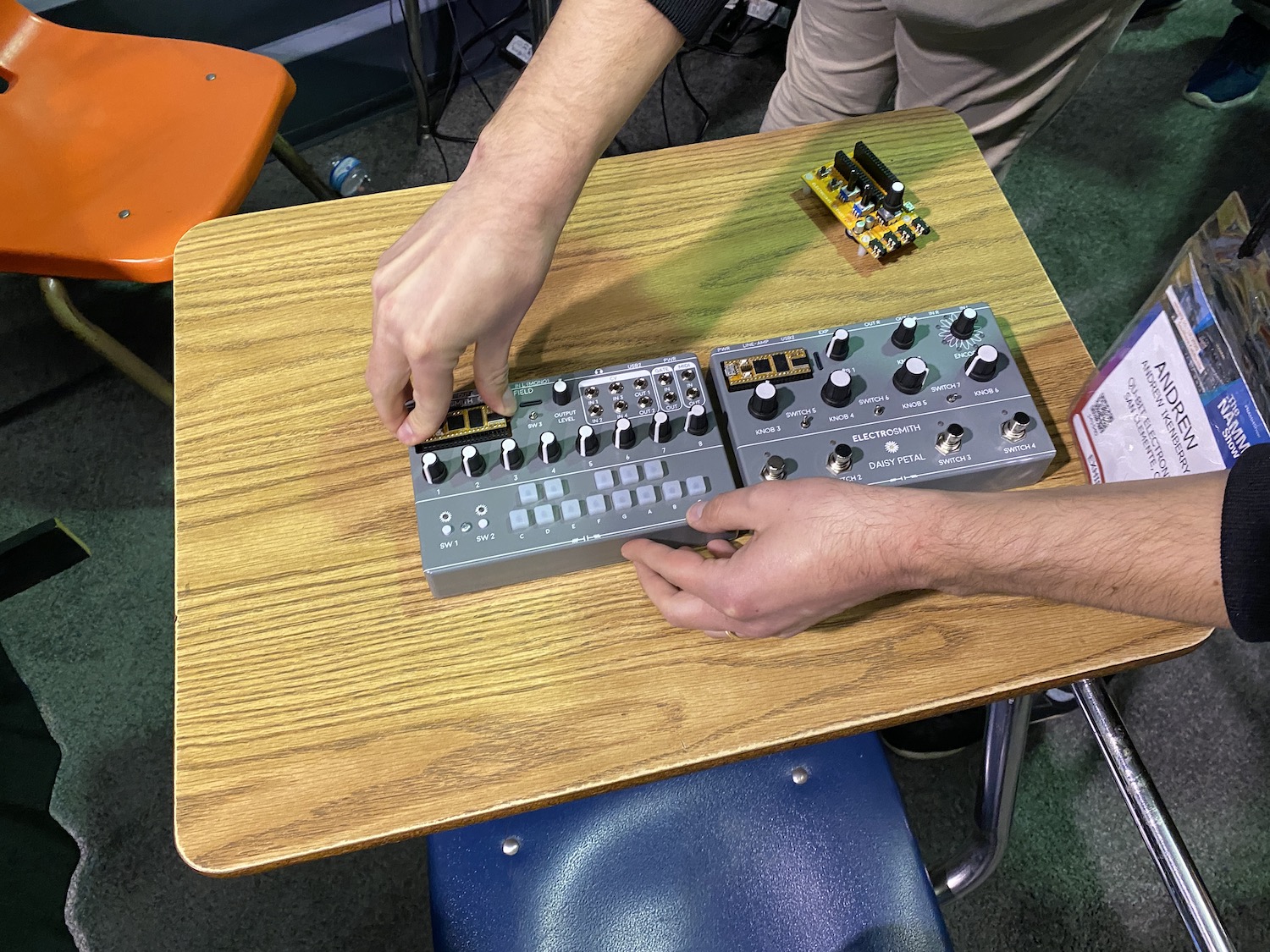
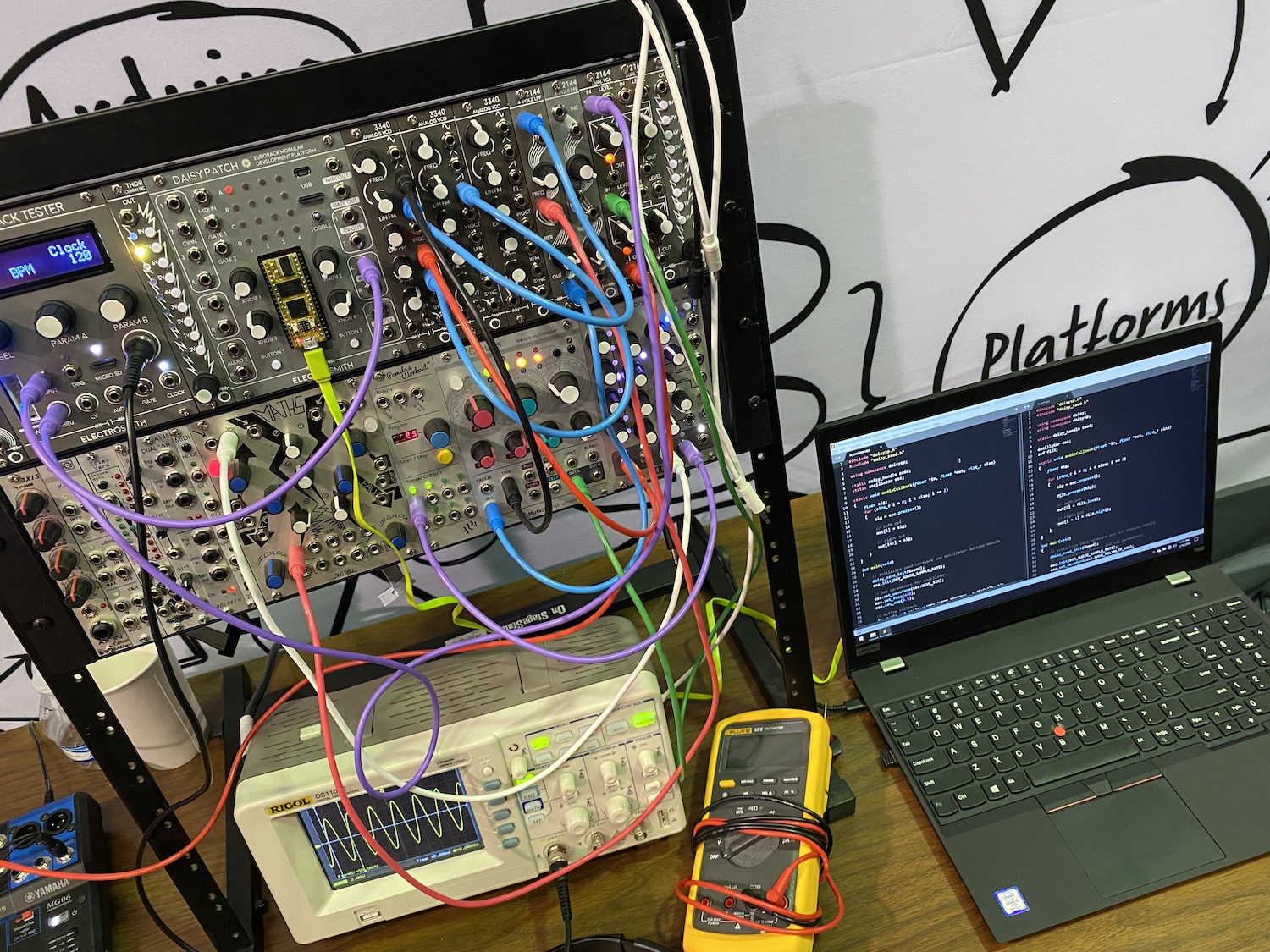
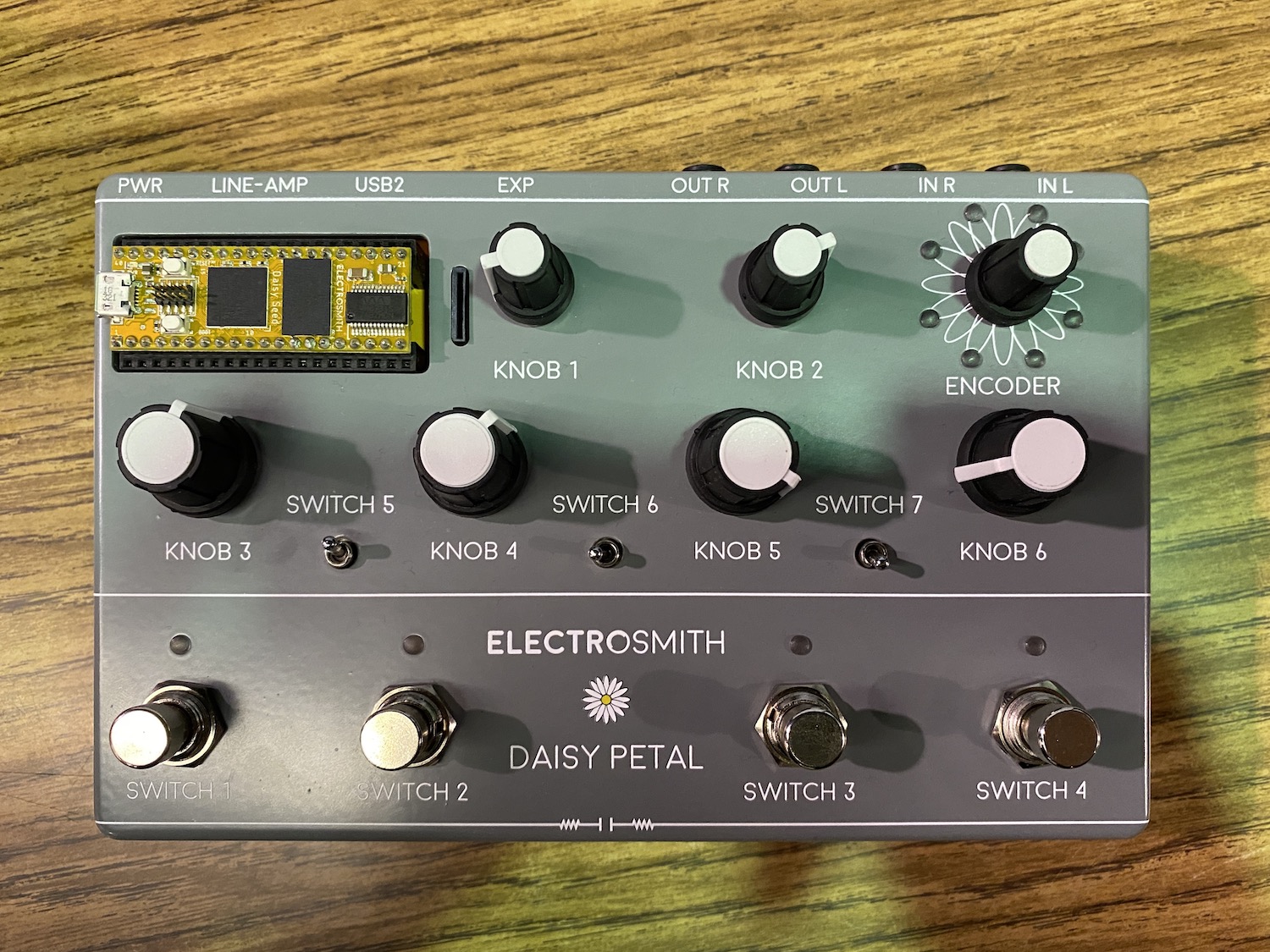
And now it can be told - we’ve been beta testing it with gen~ code export and have had that exported code running on the Daisy successfully. There will be more details on this at a later date. For now, check out their website and stay tuned for the Kickstarter launch coming soon.
Qu-Bit had four VERY interesting modules which I’m personally quite excited about. These all have a kind of audio destructive slant to them which fits into my interest areas perfectly, I can’t wait to take them for a spin with my own material.


What’s worth noting is that these four-modules are built using the Daisy platform. It's reassuring to know that this embedded platform is already working in a ‘real-world’ environment (You can also find it in Noise Engineerings’ new reverb offering, too).
A great release for those of us who combine Max (or anything on the computer really) with Eurorack is a new modular from Noise Engineering called Univer Inter — a simple and affordable MIDI-to-CV interface that’s completely customizable. It has 8 outputs, USB MIDI and TRS MIDI in/out.
Along with MIDI-to-CV, it will also do bi-directional MIDI-to-USB. It’s completely configurable through a web application on Chrome, or you can quickly choose presets ready to go.
You can choose between pitch, gate, trigger, velocity, MIDI CC, MIDI clock, and MIDI transport for each output. Group outputs for polyphonic pitch, gate, velocity, and trigger. Two UIs can also be chained, for up to 8-voice polyphony.
Last but not least, one thing that amazes me about NAMM is the level of production some companies put into presenting their new products. Universal Audio has a new virtual studio environment called LUNA (aka a DAW), and the way they were presenting it was akin to a Disney ride on a space ship, complete with long waiting lines all day, I unfortunately didn't get to take the ride.

There was a lot of buzz around their booth and LUNA is bound to be a hit given the quality of their current offerings in the pro-audio world.

Overall it felt like a pretty good NAMM, I’m probably most excited by the new embedded platform by Electro-smith, the new wavetable trend and that the synth/dsp community is opening up a number of areas for people to develop their own code for existing instruments and platforms.
by Tom Hall on January 22, 2020

